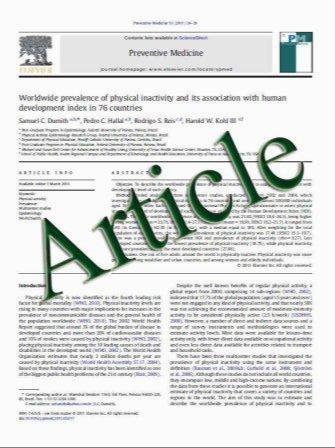Evaluation of various endothelial biomarkers in ankylosing spondylitis
- نوع فایل : کتاب
- زبان : انگلیسی
- مؤلف : Ali Taylan & Ismail Sari & Didem L. Kozaci & Yasar Yildiz & Safak Bilge & Isil Coker & Sergir Maltas & Necati Gunay & Nurullah Akkoc
- چاپ و سال / کشور: 2011
Description
Atherosclerosis has been shown to be increased in chronic inflammatory diseases including ankylosing spondylitis (AS). Impaired endothelial function, the first step in atherosclerosis, may be reflected by changes in various endothelial biomarkers of hemostasis and the release of several cellular adhesion molecules or cytokines. In this study, we investigated changes in the levels of various possible markers with regard to disease activity and treatment regimen with/without anti-TNF-ل drugs. Fifty-six AS patients (44 males) and 27 controls (19 males) with no known cardiovascular risk factors were included in the study. Spinal mobility was assessed by the Bath Ankylosing Spondylitis Metrology Index, and patients were evaluated with the Bath Ankylosing Spondylitis Functional Index and the Bath Ankylosing Spondylitis Disease Activity Index. Cytokines and various endothelial biomarkers were measured in serum samples using commercially available ELISA kits. Age, sex, BMI, waist circumference, fasting glucose, MAP, lipids are all similar between patients and controls. von Willebrand factor (vWF), soluble thrombomodulin (sTM), and urotensin (UT-II) were found to be significantly higher in the sera of the patients compared to the controls. Treatment with anti- TNF-ل compared to conventional therapy and disease activity in AS patients seemed to have no effect on the blood levels of UT-II, sTM, CD146, vWF, plasminogen activator inhibitor-1, tissue plasminogen activator, or the thrombin–antithrombin complex. The increased UT-II, sTM, and vWF in AS patient sera regardless of treatment and disease activity suggest an increased tendency for atherosclerosis
Clin Rheumatol Received: 18 February 2011 / Revised: 28 March 2011 / Accepted: 17 April 2011


